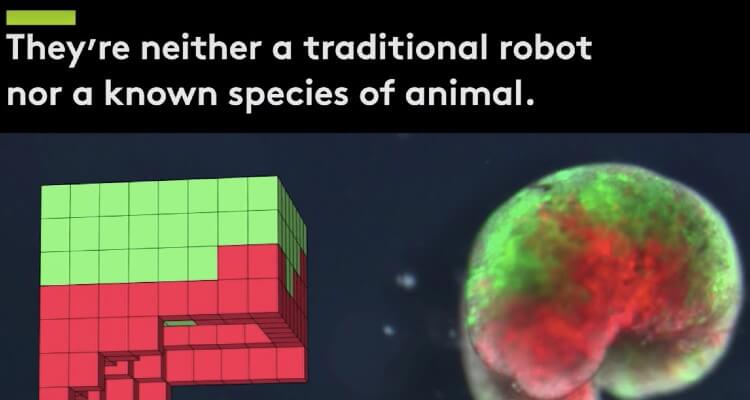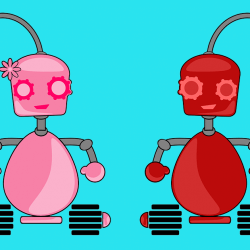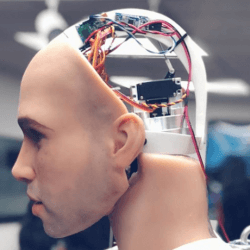First Living, Healing Robot May Revolutionize Sex Tech
Mixing technology and biology, Xenobot is a new kind of cyborg.

Every so often, we get word of a technological breakthrough that could someday truly rock the world of sexual technology.
Unfortunately, these kinds of announcements often end up being more about a tweak or two to an already existing innovation, rather than anything truly novel.
Then you have the truly big things: and few are as big as what Joshua Bongard and Michael Levin at the University Of Vermont, with assistance from Tufts University, have done.
Meet Xenobot: a groundbreaking reconfigurable artificial organism that’s assembled via computer uses stem cells collected from an African frog.
What makes it tick
This might be a tad complicated: in essence, Bongard and Levin, with the help of their research team, began by taking frog stem cells, harvested from a fertilized embryo, and then let them incubate for a bit.
After they reach a perfect stage in development, blocks of these cells are then sculpted using a sophisticated computer into a variety of “body forms,” which are subsequently assembled like Lego bricks to suit whatever purpose their designers might need.
In a University of Vermont press release, Bongard describes them as “novel living machines” and says that “They’re neither a traditional robot nor a known species of animal. It’s a new class of artifact: a living, programmable organism.”
Named Xenobots after Xenopus laevis, the frog whose cells they utilized, the end result isn’t exactly huge: in fact, they could easily travel through a human being’s circulatory system.
Inherent limitations

On the project’s site, the team has addressed questions about the process as well as Xenobots’ potential and limitations, including what has already been accomplished: “So far we have built computer-designed organisms that walk, swim, push/carry an object, and work together in groups.”
The research team gets into the concerns some will no doubt have about using a supercomputer to create and assemble this new form of life, which could very well be considered a new approach to the old idea of a cybernetic lifeform.
To begin with, Xenobots don’t eat, and so can’t reproduce on their own; any necessary “fuel” needed to keep them working will have been included in their construction.
Similarly, as they are built via outside control—a powerful computer—they can’t evolve or change on their own. So no worries, at least for the present, that they might eventually run amok.
Researchers even touch on worst-case scenarios like militarization or what could happen if the technology is used recklessly:
At the moment though it is difficult to see how an AI could create harmful organisms any easier than a talented biologist with bad intentions could. Despite this, we believe that, as this technology matures, regulation of its use and misuse should be a high priority.
Possible uses for Xenobots

Right off the bat, these new “body forms” could be a new tool in treating injuries or delivering medications to precise locations within the body, making Xenobots far less risky and much closer to becoming commercially available than, for instance, purely mechanical nanobots.
They could even be used in greater numbers to form entire organs, or perhaps as a cluster of micro-versions, where rather than making a whole kidney, heart, or liver, they could become colonies of teeny-tiny blood pumps or microscopic filters and do the same job.
We might even use them as one-time-only toxic waste control, with Xenbots gathering and breaking down oil, plastic, or whatever you want to get rid of, and then dissolving when they reach the end of their short life cycle.
Then—and thanks for being patient—we come to sex.
Building blocks for erotic pleasure

While Xenobots are, at present, only on the microscopic scale, there’s a possibility that we’ll be able to increase their size or use the technology behind them to construct devices with their own form of living skin.
The end results would not just be infinitely customizable, possibly formed around a traditionally manufactured core that houses the electronic guts of the sex toy, but they’d also feel truly life-like. This a benefit that, should they become damaged, they’d be able to heal just like present-day Xenobots can already do.
If visions of Cronenberg have started dancing through your head, keep in mind this quasi-living outer skin could be far too thin to make them feel—and let’s just say it—creepy.
Jumping time even further forward, Xenobot tech may have the potential to develop into something akin to a sex doll version of the Terminator. Not in a red-eyed “I’ll be back” variety but, as with our speculated sex toys, as a much more sensual, pleasurable outer covering that could heal when damaged or even change its texture, coloration, and more on the fly.
Finally, there’s the thought that we might see a descendant of current Xenobots that could allow us to make customized or preferred genitalia.
Built from the ground-up to be easily integrated with our existing biology, these sexual and/or gender constructs would also be modifiable—shape, size, texture, color, or other configurations—to meet the user’s needs or sexual pleasures.
Huge development, early stages
As with other truly huge innovations, the ones that might really shake sex tech to its roots, this ultimate level of Xenobot technology may not happen for a great many years.
In the meantime, these innovators from the University of Vermont have definitely given us a thought-provoking look at a time when doctors might program up specialized microscopic tools or medication delivery systems and, through some of those frog stem cells, help us to heal from the inside out.
And, as we’re treated, we’ll also ponder where this technology could go: to days when we’ll be able to use the same technology to grow—and breathe a new form of life—into our deepest sexual desires.
Image sources: University of Vermont
Leave a reply
You must be logged in to post a comment.

















